Table of Contents
- Understanding Schutzhund: The Basics
- Preparing for Schutzhund Training: Essential Gear and Tools
- Obedience Training: Building a Foundation of Trust and Control
- Tracking Training: Following the Scent Trail to Success
- Protection Training: Developing Confidence and Control in Your Dog
- Advanced Schutzhund Techniques: Taking Your Dog’s Training to the Next Level
- Troubleshooting Common Issues in Schutzhund Training
- Building a Lifelong Bond: Reinforcing Training Outside of Schutzhund
- The Importance of Patience, Consistency, and Positive Reinforcement in Schutzhund Training
Understanding Schutzhund: The Basics
Schutzhund is a German term that means “protection dog” in English. It is a sport that was developed in Germany in the early 1900s as a way to test the working abilities of German Shepherds. Today, it has become a popular sport for all kinds of working breeds, including Belgian Malinois, Rottweilers, and Doberman Pinschers.
Schutzhund dog training is broken down into three main areas: obedience, tracking, and protection. These three areas are designed to test a dog’s natural abilities and train them to become well-rounded and reliable working dogs.
In the obedience phase of Schutzhund training, dogs learn to follow commands and exhibit good behavior in various situations. This phase includes on-leash and off-leash exercises, heeling, and recall.
The tracking phase is designed to test a dog’s natural scenting ability and train them to follow a scent trail. This phase includes tracking on various surfaces, identifying and indicating articles, and following a track with multiple turns.
The protection phase is designed to test a dog’s courage, confidence, and control. This phase includes exercises such as a bark and hold, the escort, and the courage test.
Schutzhund dog training is a demanding and rigorous sport that requires a lot of hard work, patience, and dedication from both the dog and the handler. With proper training and guidance, any dog can excel in Schutzhund and become a well-trained companion for their handler.
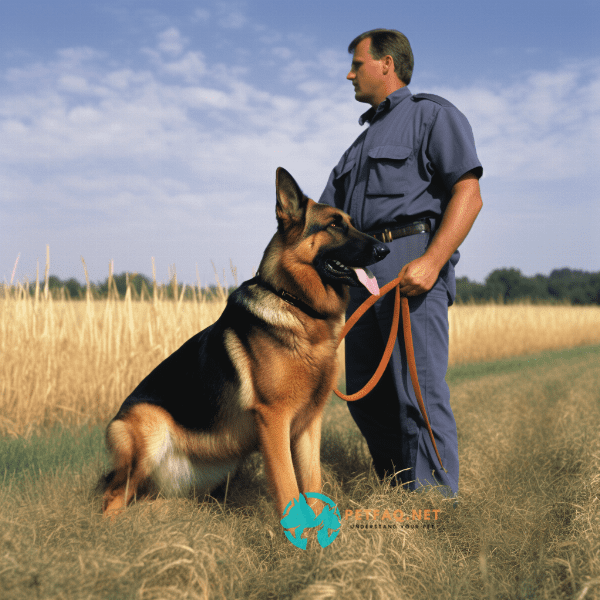
Preparing for Schutzhund Training: Essential Gear and Tools
Before starting Schutzhund dog training, it’s important to have the right gear and tools to ensure the safety and success of both the dog and the handler. Here are some essential items that every Schutzhund handler should have:
1. Harness and Leash – A well-fitted harness and leash are necessary for controlling the dog during training. A good harness will distribute pressure evenly across the dog’s chest and back, while a strong leash will allow the handler to maintain control and communicate effectively with the dog.
2. Bite Sleeve and Suit – In the protection phase of Schutzhund training, the dog will be trained to bite and hold on to a sleeve or suit. A good bite sleeve or suit should be made of durable material and provide sufficient protection for the handler.
3. Tracking Line and Articles – For the tracking phase of Schutzhund training, a long tracking line and various articles will be needed. The tracking line should be strong and long enough to allow the dog to track comfortably, while the articles will be used to test the dog’s scenting ability.
4. Treats and Toys – Positive reinforcement is a key component of Schutzhund dog training. Having plenty of treats and toys on hand will help motivate and reward the dog for good behavior.
5. First Aid Kit – Accidents can happen during Schutzhund training. Having a first aid kit on hand with items such as bandages, antiseptic spray, and tweezers can help to quickly address any injuries.
By having these essential items on hand, handlers can ensure that their dogs are safe and comfortable during training and that they have the necessary tools to achieve success in Schutzhund dog training.
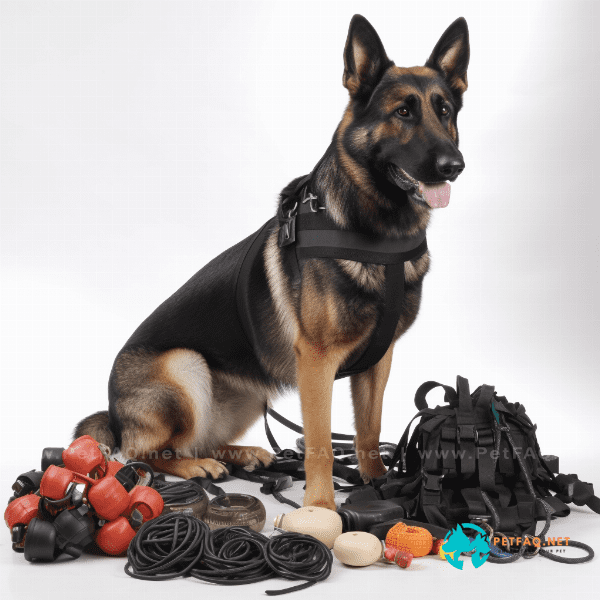
Obedience Training: Building a Foundation of Trust and Control
Obedience training is an essential component of Schutzhund dog training, as it lays the foundation for all other phases of training. In this phase, the handler and dog develop a strong bond of trust and work on building control over the dog’s behavior. Here are some key aspects of obedience training in Schutzhund:
1. Basic Commands – The first step in obedience training is to teach the dog basic commands such as sit, stay, come, and heel. These commands will be the building blocks for more advanced exercises in the future.
2. Focus and Attention – In Schutzhund dog training, it’s important for the dog to be focused and attentive to the handler’s commands. Exercises such as eye contact and watch me can help to build this focus and attention.
3. On-Leash Exercises – During on-leash exercises, the handler and dog work together to perform various exercises such as heeling, turns, and changes of pace. These exercises help to build control over the dog’s movements and behavior.
4. Off-Leash Exercises – Off-leash exercises are designed to test the dog’s level of control and obedience. These exercises include recall, stays, and various obstacles that the dog must navigate without the aid of a leash.
5. Positive Reinforcement – Positive reinforcement is a key component of obedience training in Schutzhund. Rewards such as treats and toys can be used to motivate and encourage good behavior.
Through consistent and positive obedience training, handlers can develop a strong bond of trust with their dogs and establish a foundation of control and reliability that will be essential in the later phases of Schutzhund dog training.
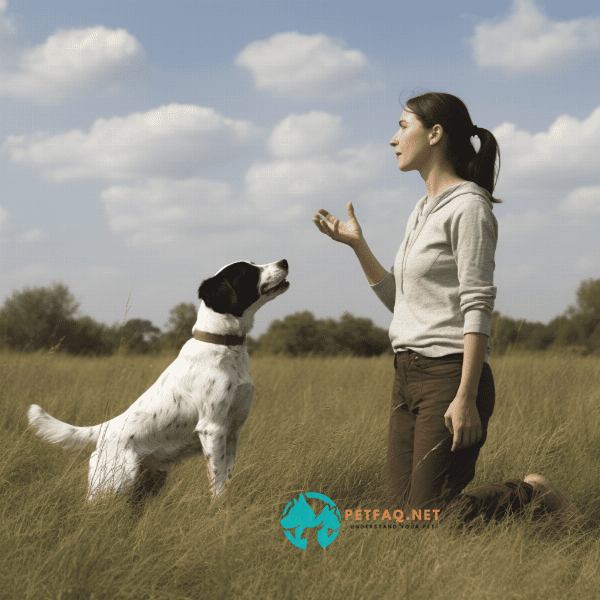
Tracking Training: Following the Scent Trail to Success
1. Basic Concepts – In tracking training, the dog learns to follow a scent trail left by a person or animal. The handler will lay a track using various surfaces such as grass, dirt, or concrete, and the dog will use their nose to follow the scent.
2. Article Identification – Along the track, the dog will be required to identify and indicate various articles such as a glove or a piece of cloth. This exercise tests the dog’s ability to differentiate between scents and identify specific objects.
3. Turns and Cross-Tracks – In advanced tracking exercises, the dog will encounter turns and cross-tracks. This tests the dog’s ability to follow a scent trail while dealing with distractions and changes in direction.
4. Timing and Pacing – Timing and pacing are important aspects of tracking training in Schutzhund. The handler must lay the track at the appropriate time and pace, taking into account factors such as weather conditions and the dog’s abilities.
By training their dogs to track using their natural scenting abilities, handlers can develop a strong working bond with their dogs and lay the foundation for success in the later phases of Schutzhund dog training.
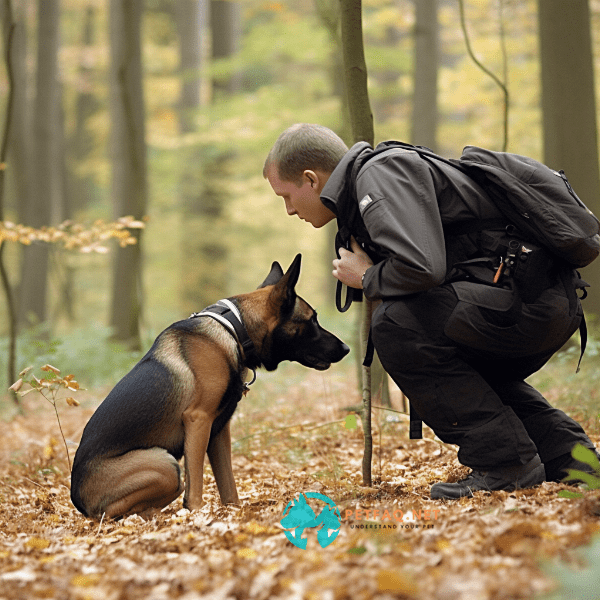
Protection Training: Developing Confidence and Control in Your Dog
The protection phase of Schutzhund dog training is designed to test a dog’s courage, confidence, and control. Here are some key aspects of protection training in Schutzhund:
1. Bark and Hold – In this exercise, the dog is trained to bark and hold on to a target such as a sleeve or padded stick. The handler will then approach the dog, and the dog must maintain their hold until given the release command.
2. The Escort – In the escort exercise, the dog is trained to escort the handler while biting and holding on to a target. This exercise tests the dog’s ability to protect the handler while maintaining control and obedience.
3. The Courage Test – The courage test is designed to test the dog’s ability to confront and hold ground against a threatening person. The dog must demonstrate confidence and courage in the face of danger.
4. Focus and Control – In protection training, it’s important for the dog to maintain focus and control over their actions. The handler must be able to communicate effectively with the dog and give commands to direct their behavior.
By training their dogs in the protection phase of Schutzhund dog training, handlers can develop a high level of trust and control over their dogs, and their dogs can become reliable and confident working companions.
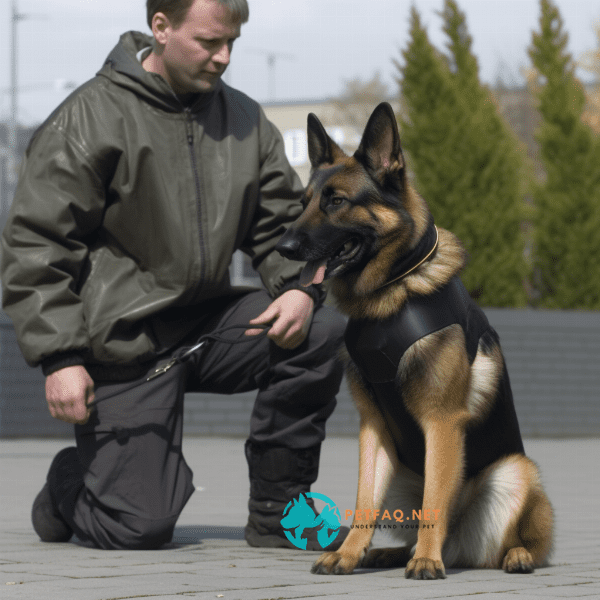
Advanced Schutzhund Techniques: Taking Your Dog’s Training to the Next Level
Once a dog has mastered the basic techniques of Schutzhund dog training, handlers can move on to advanced techniques to further challenge their dogs and refine their skills. Here are some key aspects of advanced Schutzhund techniques:
1. Advanced Obedience – Advanced obedience exercises can include off-leash work, distance commands, and more complex routines. These exercises require a high level of trust and control between the handler and dog.
2. Diversified Tracking – Diversified tracking involves introducing more complex scent trails, such as those with multiple articles or turns. This challenges the dog’s natural scenting abilities and trains them to follow more challenging tracks.
3. Advanced Protection Work – Advanced protection work includes exercises such as the long bite, the out and return, and the redirect. These exercises require a high level of focus and control from both the dog and handler.
4. Agility and Obstacle Training – Agility and obstacle training involves teaching the dog to navigate various obstacles such as jumps, tunnels, and A-frames. This helps to build the dog’s confidence and agility and can improve their overall performance in Schutzhund.
5. Mental Conditioning – Mental conditioning involves exposing the dog to various stressors and distractions, such as loud noises or strange environments. This helps to build the dog’s mental toughness and resilience, and prepares them for the rigors of Schutzhund competitions.
By incorporating advanced techniques into their Schutzhund dog training regimen, handlers can continue to challenge their dogs and improve their performance. These techniques require a high level of dedication and commitment, but the rewards of a well-trained and reliable working dog are well worth the effort.
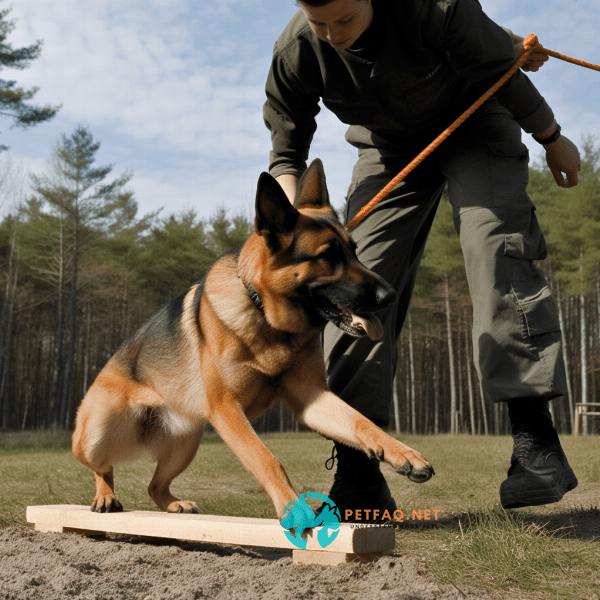
Troubleshooting Common Issues in Schutzhund Training
Schutzhund dog training can be a challenging and demanding sport, and there are several common issues that handlers may encounter along the way. Here are some tips for troubleshooting these issues:
1. Lack of Motivation – If a dog is not motivated to participate in Schutzhund dog training, it may be helpful to vary the training routine or introduce new toys or treats to motivate the dog. It’s also important to make sure that the dog is getting enough exercise and mental stimulation outside of training.
2. Fear or Aggression – Fear or aggression can be a serious issue in Schutzhund training. It’s important to work with a qualified trainer or behaviorist to address these issues and develop a plan to help the dog feel more confident and secure.
3. Lack of Focus – If a dog is having trouble maintaining focus during training, it may be helpful to simplify the training routine and focus on one skill at a time. Consistent positive reinforcement can also help to improve the dog’s focus and attention.
4. Physical Issues – Physical issues such as soreness or injuries can impact a dog’s performance in Schutzhund training. It’s important to monitor the dog’s health and seek veterinary care when necessary to prevent these issues from becoming chronic.
5. Handler Error – Handler error can be a common issue in Schutzhund training. It’s important to be consistent with training techniques and communicate effectively with the dog to prevent confusion or misunderstandings.
By troubleshooting common issues in Schutzhund dog training, handlers can help their dogs to overcome challenges and achieve success in the sport. It’s important to remember that every dog is different, and what works for one dog may not work for another. Patience, persistence, and a willingness to adapt to the dog’s needs are key to successful Schutzhund dog training.
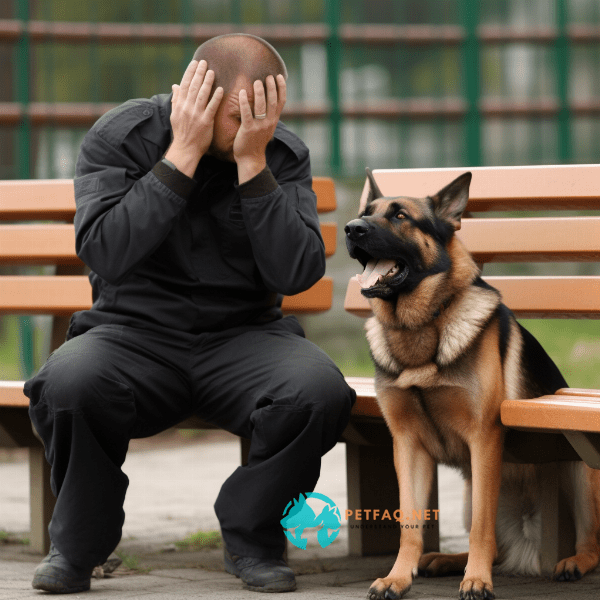
Building a Lifelong Bond: Reinforcing Training Outside of Schutzhund
Schutzhund dog training is not just about developing a well-trained working dog, it’s also about building a lifelong bond between the dog and handler. Here are some tips for reinforcing training outside of Schutzhund:
1. Everyday Commands – Reinforce Schutzhund training by incorporating everyday commands such as sit, stay, and come into your daily routine. Consistently practicing these commands helps to reinforce the dog’s training and builds a stronger bond between the dog and handler.
2. Exercise and Play – Exercise and play are important components of reinforcing Schutzhund training outside of the sport. Activities such as fetch or a game of tug-of-war help to keep the dog physically and mentally stimulated, and can reinforce the dog’s obedience and focus.
3. Positive Reinforcement – Positive reinforcement is key to reinforcing Schutzhund training outside of the sport. Use treats or toys to reward good behavior and reinforce training techniques.
4. Continuing Education – Attend seminars or workshops to learn more about Schutzhund dog training and advanced training techniques. Continued education can help to reinforce training and improve the dog’s overall performance.
5. Quality Time – Spending quality time with the dog outside of Schutzhund training is essential to building a strong and lifelong bond. Simple activities such as cuddling or going for a walk can help to strengthen the dog’s trust and bond with their handler.
By reinforcing Schutzhund training outside of the sport, handlers can build a strong and lasting bond with their dogs. Consistency, patience, and positive reinforcement are key to reinforcing training and building a successful partnership between the dog and handler.
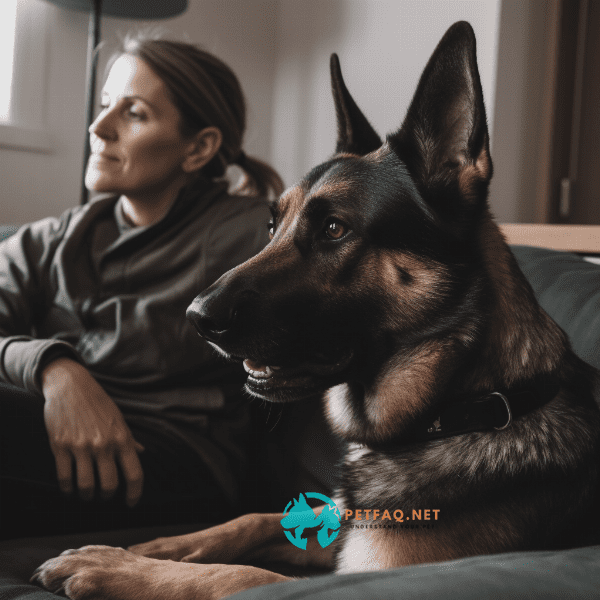
The Importance of Patience, Consistency, and Positive Reinforcement in Schutzhund Training
Schutzhund dog training is a demanding and challenging sport that requires patience, consistency, and positive reinforcement. Here are some reasons why these qualities are essential in Schutzhund training:
1. Patience – Patience is key in Schutzhund training because it takes time for dogs to learn and master new skills. Rushing the training process can lead to frustration for both the dog and handler, and may result in the dog becoming anxious or disengaged from training.
2. Consistency – Consistency is essential in Schutzhund training because dogs thrive on routine and predictability. By consistently using the same training techniques and commands, handlers can help their dogs to understand what is expected of them and build a strong foundation of obedience.
3. Positive Reinforcement – Positive reinforcement is crucial in Schutzhund training because it helps to motivate and encourage good behavior. Rewards such as treats or toys can help to reinforce training techniques and build a strong bond between the dog and handler.
By practicing patience, consistency, and positive reinforcement in Schutzhund training, handlers can develop a strong and reliable working bond with their dogs. These qualities help to build trust, confidence, and mutual respect between the dog and handler, and can lead to success in the sport. While Schutzhund training can be challenging, the rewards of a well-trained and reliable working dog are well worth the effort.

Frequently Asked Questions (FAQs) about Schutzhund dog training:
1. What is Schutzhund dog training?2. Is Schutzhund training suitable for all dogs?
3. Canadian Working Dog Federation (CWDF): This organization offers Schutzhund/IPO/IGP titles and competitions for several breeds in Canada.
4. Are there any organizations or competitions for Schutzhund-trained dogs?



